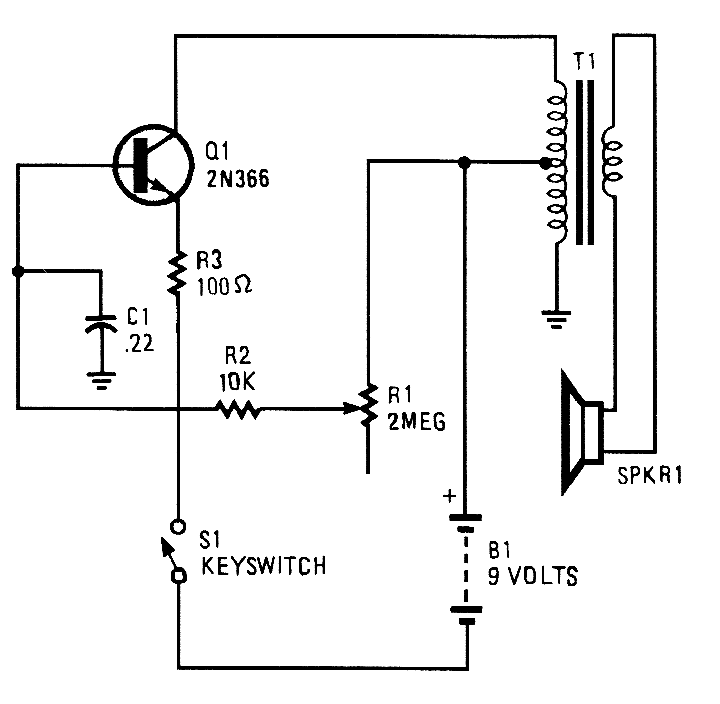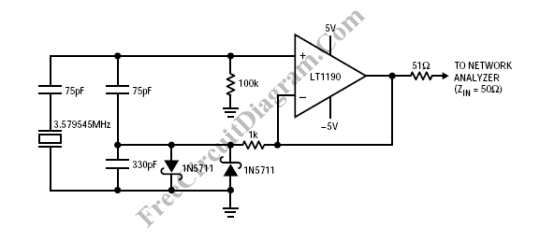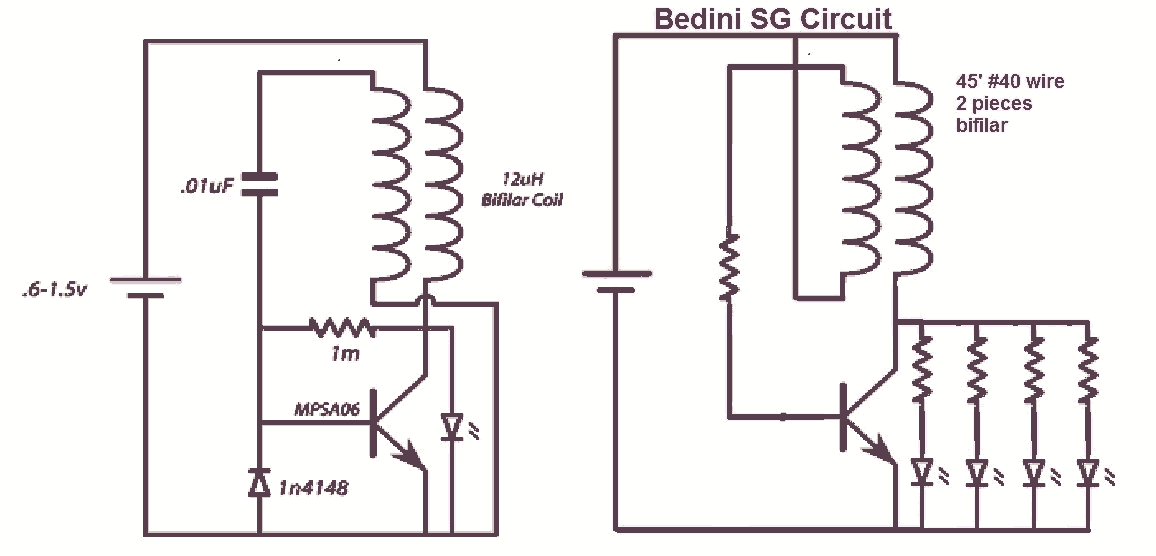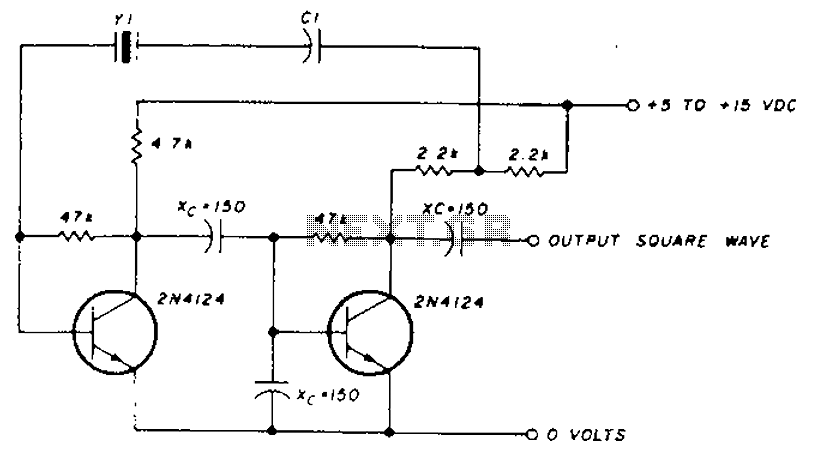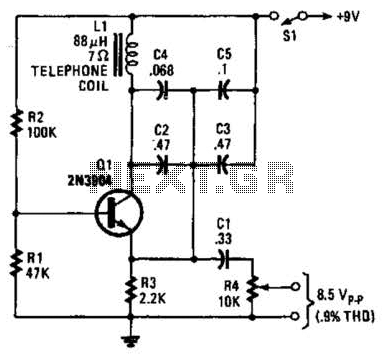
Overtone crystal oscillator
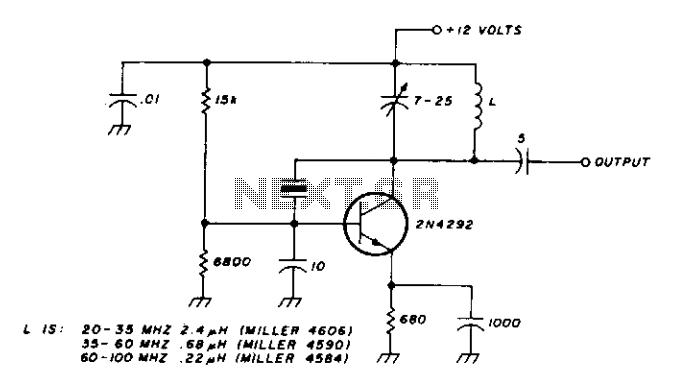
This oscillator is designed for overtone crystals in the 20-100 MHz range, operating in the third and fifth mode. The operating frequency is determined by the tuned circuit.
The oscillator circuit is specifically tailored to utilize overtone crystals, which are designed to resonate at higher frequencies, typically in the third and fifth overtone modes. These modes allow for efficient frequency multiplication, enabling the oscillator to generate signals within the specified frequency range of 20-100 MHz.
The core component of the oscillator is the overtone crystal, which is characterized by its high Q factor, providing stability and low phase noise. The tuned circuit, which consists of inductors and capacitors, plays a crucial role in determining the operating frequency. By adjusting the values of these reactive components, the circuit can be finely tuned to achieve the desired frequency output.
In designing the oscillator, attention must be given to the load capacitance and the series resistance of the crystal, as these factors influence the performance and efficiency of the oscillator. Additionally, the circuit may incorporate feedback mechanisms to enhance stability and minimize drift over time.
Power supply considerations are also critical, as the oscillator must operate within specified voltage and current limits to ensure reliable performance. The output stage of the oscillator can be designed to drive various loads, depending on the application, whether it be for RF transmission, signal generation, or clocking applications in digital circuits.
Overall, this oscillator design is suitable for applications requiring precise frequency generation in the specified MHz range, leveraging the properties of overtone crystals to achieve high performance and reliability.This oscillator is designed for overtone crystals in the 20-100 MHz range operating in the third and fifth mode. Operating frequency is determined by the tuned circuit. 🔗 External reference
The oscillator circuit is specifically tailored to utilize overtone crystals, which are designed to resonate at higher frequencies, typically in the third and fifth overtone modes. These modes allow for efficient frequency multiplication, enabling the oscillator to generate signals within the specified frequency range of 20-100 MHz.
The core component of the oscillator is the overtone crystal, which is characterized by its high Q factor, providing stability and low phase noise. The tuned circuit, which consists of inductors and capacitors, plays a crucial role in determining the operating frequency. By adjusting the values of these reactive components, the circuit can be finely tuned to achieve the desired frequency output.
In designing the oscillator, attention must be given to the load capacitance and the series resistance of the crystal, as these factors influence the performance and efficiency of the oscillator. Additionally, the circuit may incorporate feedback mechanisms to enhance stability and minimize drift over time.
Power supply considerations are also critical, as the oscillator must operate within specified voltage and current limits to ensure reliable performance. The output stage of the oscillator can be designed to drive various loads, depending on the application, whether it be for RF transmission, signal generation, or clocking applications in digital circuits.
Overall, this oscillator design is suitable for applications requiring precise frequency generation in the specified MHz range, leveraging the properties of overtone crystals to achieve high performance and reliability.This oscillator is designed for overtone crystals in the 20-100 MHz range operating in the third and fifth mode. Operating frequency is determined by the tuned circuit. 🔗 External reference
Warning: include(partials/cookie-banner.php): Failed to open stream: Permission denied in /var/www/html/nextgr/view-circuit.php on line 713
Warning: include(): Failed opening 'partials/cookie-banner.php' for inclusion (include_path='.:/usr/share/php') in /var/www/html/nextgr/view-circuit.php on line 713
